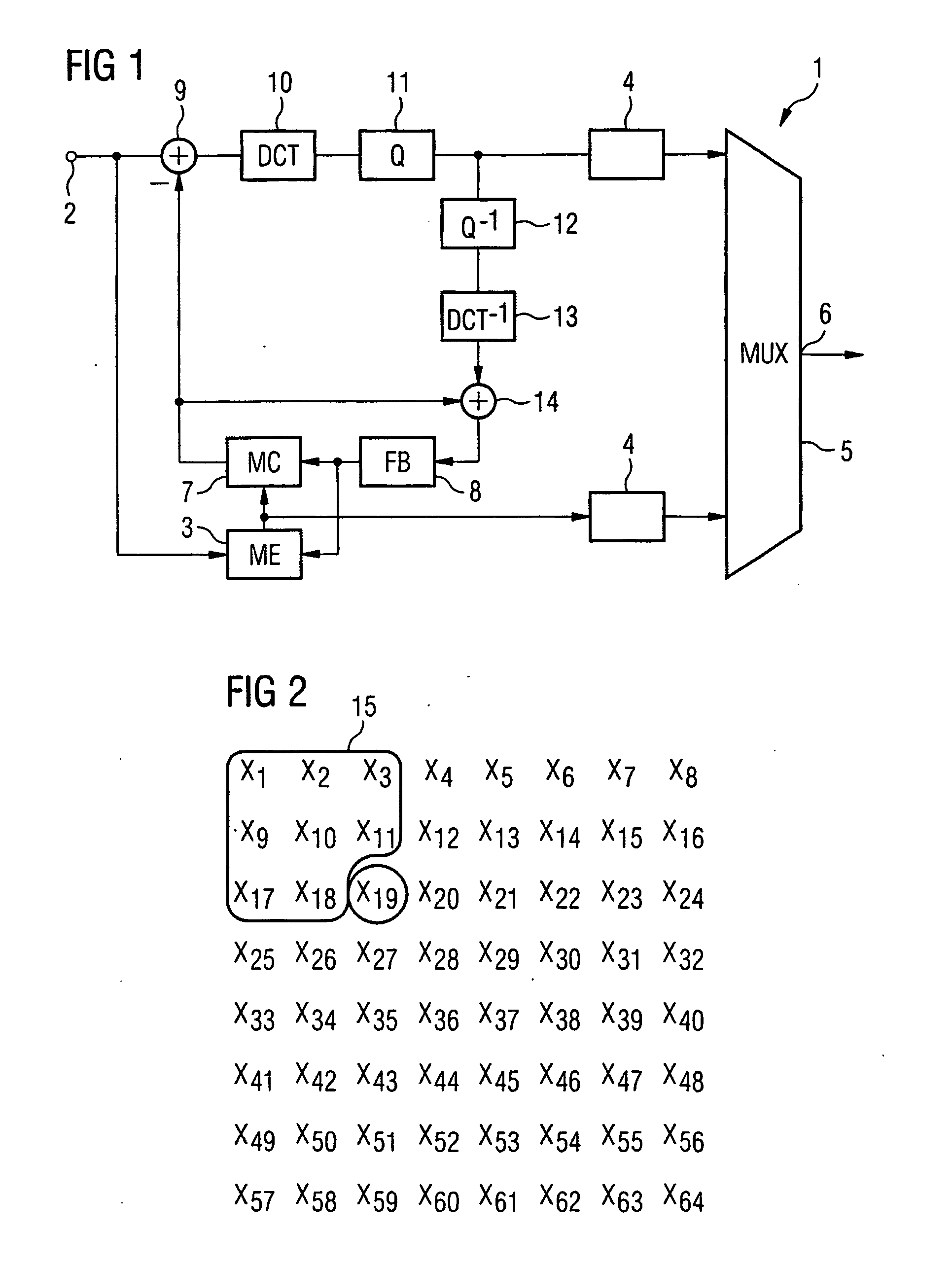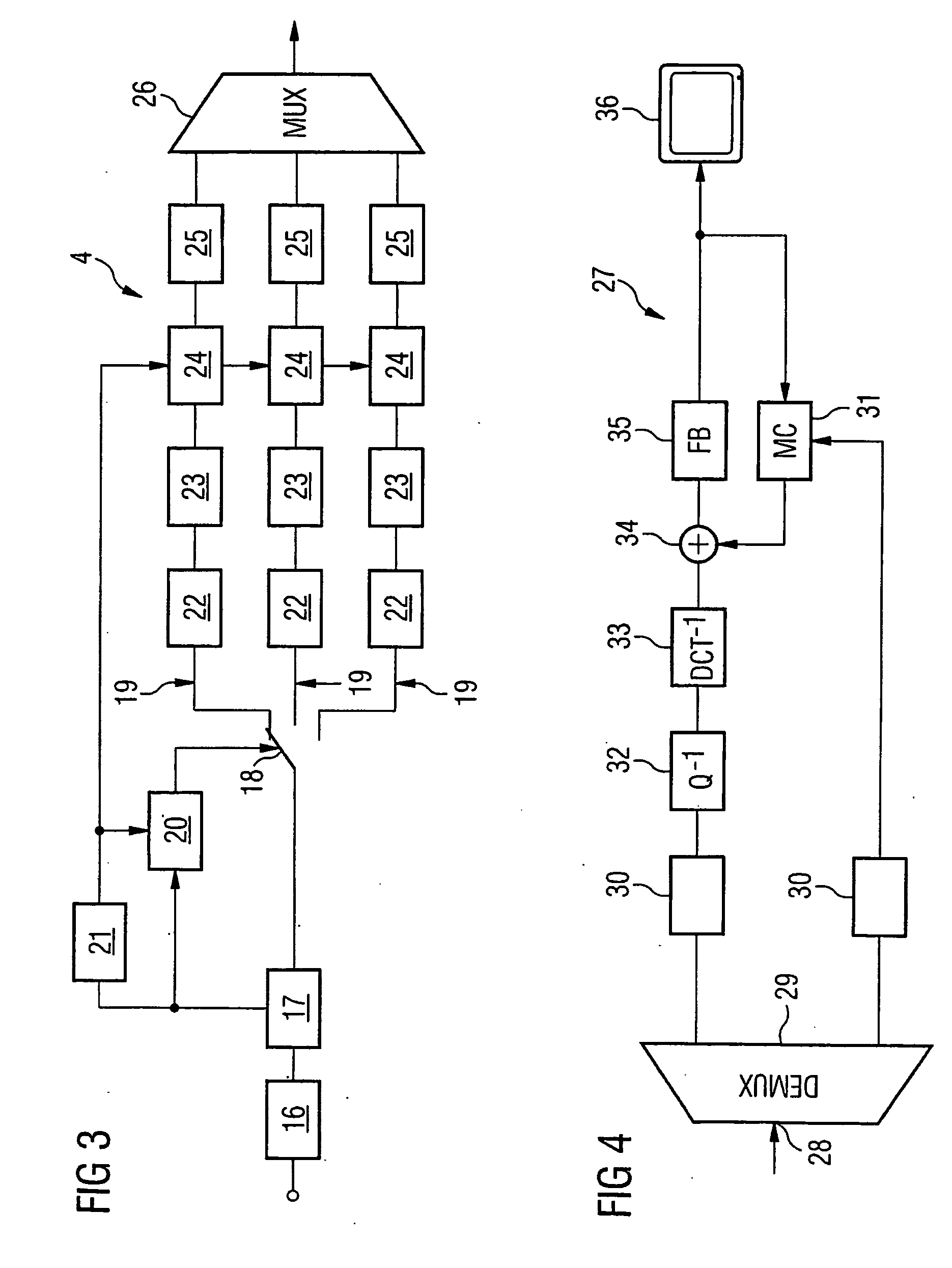Context-sensitive encoding and decoding of a video data stream
a video data and context-sensitive technology, applied in the field of compression and decompression of video data streams, can solve the problem of tightly restricted bandwidth of packet-oriented data networks, and achieve the effect of easy parameterization
- Summary
- Abstract
- Description
- Claims
- Application Information
AI Technical Summary
Benefits of technology
Problems solved by technology
Method used
Image
Examples
Embodiment Construction
[0032] Reference will now be made in detail to the preferred embodiments of the present invention, examples of which are illustrated in the accompanying drawings, wherein like reference numerals refer to like elements throughout.
[0033]FIG. 1 shows an encoder 1 which operates in accordance with the principle of the motion-compensating hybrid encoding. The encoder 1 has an input 2 via which the video data stream is fed to the encoder 1. In particular video data of a sequence of images is fed via the input 2 to the encoder. A motion estimation unit 3 segments the current image to be encoded of the video data stream into rectangular macro blocks which are mostly 8×8 or 16×16 pixels in size. For each of these macro blocks the motion estimation unit 3 looks for matching macro blocks from the images already transmitted and calculates their motion vectors. The motion vectors can then be encoded with the aid of known code tables but also with the aid of a context-sensitive encoding unit 4 d...
PUM
 Login to View More
Login to View More Abstract
Description
Claims
Application Information
 Login to View More
Login to View More - R&D
- Intellectual Property
- Life Sciences
- Materials
- Tech Scout
- Unparalleled Data Quality
- Higher Quality Content
- 60% Fewer Hallucinations
Browse by: Latest US Patents, China's latest patents, Technical Efficacy Thesaurus, Application Domain, Technology Topic, Popular Technical Reports.
© 2025 PatSnap. All rights reserved.Legal|Privacy policy|Modern Slavery Act Transparency Statement|Sitemap|About US| Contact US: help@patsnap.com



